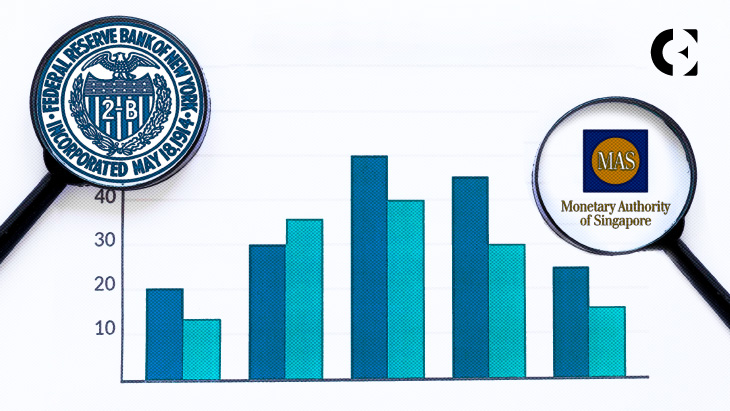- NYIC and MAS released a research report on Cedar x Ubin+ experiment, building upon Project Cedar.
- The experiment focused on cross-border multi-currency payments using vehicle currencies.
- It evaluated DLT’s potential to connect simulated currency ledgers & reduce settlement risk.
The New York Innovation Center (NYIC) of the Federal Reserve Bank of New York and the Monetary Authority of Singapore (MAS) have released a research report on Project Cedar Phase II x Ubin+ (Cedar x Ubin+).
The experiment expanded upon the earlier phases of Project Cedar by the NYIC and Ubin+ initiative by MAS. The study focused on a cross-border multi-currency scenario, utilizing vehicle currencies as intermediaries for less commonly traded currency pairs.
Moreover, it aimed to assess how distributed ledger technology (DLT) could enable connectivity between different simulated currency ledgers, minimize settlement risk, and expedite settlement time. The entire experiment took place in a controlled test environment, with simulated wholesale central bank digital currencies used for settlement purposes.
Michelle Neal, Head of the Markets Group at the New York Fed quoted:
Our research collaboration with the MAS reveals key opportunities for central bank innovation to play an important role in easing wholesale payment flows globally and improving settlement outcomes.
Meanwhile, Leong Sing Chiong, Deputy Managing Director at MAS, stated that the Cedar x Ubin+ experiment envisions a digital currency landscape where central banks can enhance interoperability of wholesale CBDCs. This would enable more efficient cross-border payments, even for less liquid currencies, without the need for a shared infrastructure.
The experiment addressed three key aspects including interoperability and autonomy, atomic settlement, and near real-time settlement. In terms of interoperability and autonomy, the experiment successfully connected distinct central bank currency ledgers, allowing each central bank to maintain control over its ledger without the need for a central clearing authority or shared network.
Regarding atomic settlement, transactions were settled only if all legs of the cross-currency payment chains were executed successfully. This increased the certainty of settlement and addressed counterparty risks.
Additionally, the experiment also achieved near real-time settlement, with end-to-end settlement taking less than 30 seconds on average. This provided participants with quick notifications of payment success.
The study also identified areas for future research and analysis, such as evaluating the network solution’s ability to handle large transaction volumes and potentially increasing the number of payments settled per second. Additionally, exploring the inclusion of additional currencies supported by their respective central bank ledgers is also recommended.
Disclaimer: The information presented in this article is for informational and educational purposes only. The article does not constitute financial advice or advice of any kind. Coin Edition is not responsible for any losses incurred as a result of the utilization of content, products, or services mentioned. Readers are advised to exercise caution before taking any action related to the company.









